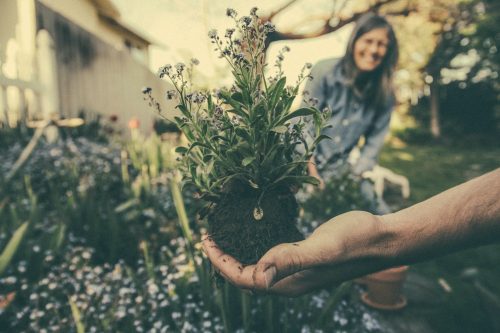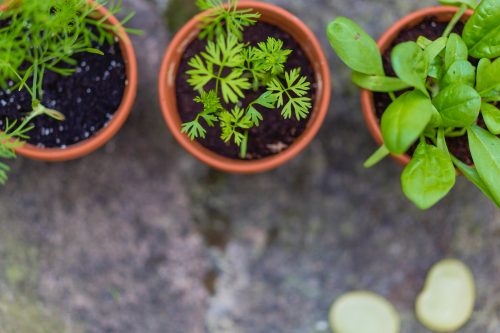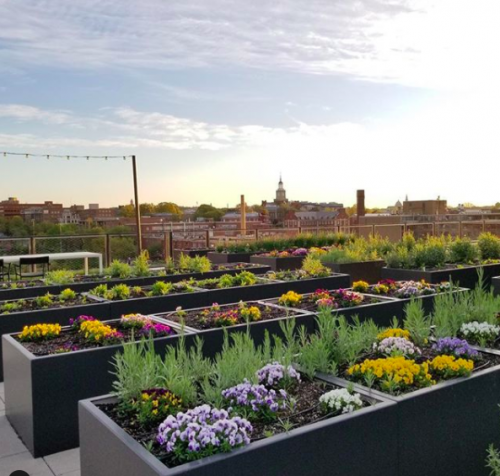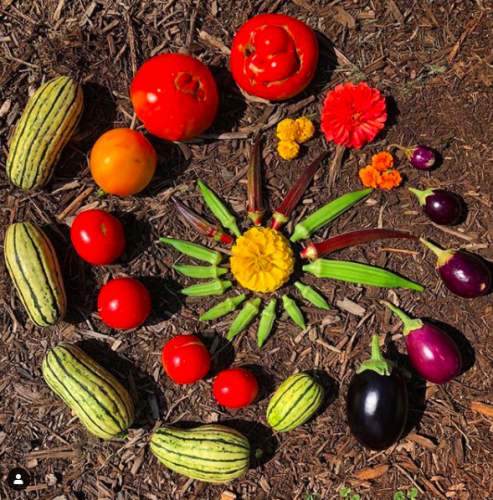Plant seeds of calm with 10 tips from top area gardeners

If you’re looking for a meditative and rewarding new hobby, look no further than gardening. (Photo courtesy of Benjamin Combs)
For some, gardening is omni-present. “I weed while on the phone, I harvest when I walk through my backyard. I find my way around town looking for a fig tree I remember … ” says Meredith Sheperd, founder of Love and Carrots, which creates and provides coaching on urban gardens in the District, Maryland and Virginia. Even as summer nears an end, this rationale is reassuring when the outside world is still root-deep in chaos. “Maybe it’s the absence of feeling that I like. It calms me down. Clears my head.” As home gardening has surged, master gardeners, naturalists and environmental sustainability experts gladly bestow “evergreen” guidance for newbies notwithstanding space constraints. Whether it’s cucumbers, eggplant, tomatoes and squash or perennials, shrubs and trees, do find a sunny spot and dig in.

Start off with a few easy plants. (Photo courtesy of Markus Spiske)
1. READ UP.
Online research pays off before you buy to find out how light, moisture and other growing conditions will support the plants. This can “save you a lot of heartbreak,” says Fairfax Master Naturalist, Audubon-at-Home Ambassador and author Margaret Fisher.
2. KEEP IT SIMPLE.
Just start with a few pots or crops while learning the dirt of gardening.
3. GIVE IT SUNSHINE!
Seems obvious, right? For vegetables, make sure plants have six to eight hours of sunlight.
4. PRACTICE DISTANCING.
Plants do this without government-mandated orders. “Overcrowding will lead to stunted and unhealthy vegetables,” Sheperd says. Focus instead on using big pots (at least 12 inches deep if possible) and a “good-sized planting area.”
5. SHOWER WITH LOVE AND WATER.
Water deeply and regularly, preferably in the morning, and at the soil line so moisture gets to the plant’s roots.

Raised beds are both a healthier and tidier alternative. (Photo by Carly Mercer.)
6. RAISE YOUR BED.
This makes vegetable gardening easier. It can also be better for the environment because it captures stormwater that would otherwise flow off lawns and damage nearby streams.
7. THINK NATIVE.
“If we add the native plants that are the basis of the ecosystem and avoid insecticides and other chemicals, we can watch our yards gradually transform into vibrant communities of birds and butterflies,” says Fisher about more suburban gardens.
8. CHOOSE COLLARDS AND KALE.
These “crops” and others that include basil, parsley, sweet and hot peppers and swiss chard, can be continually harvested as they grow (as opposed to planting a carrot seed which takes roughly 70 days to get one healthy appetizer).
9. LAYER UP.
Outside of veggies, go for different plant heights and textures says Jessica Bonilla, head gardener at the Hillwood Estate, Museum & Gardens. Start with cannas, tall zinnias, verbena bonariensis and colocasia, then knee-high plants like coleus, angelonia, salvia or annual pennisetum, and then add borders of lantana, vinca, impatiens and Alternanthera “Purple Prince” or torenia.

(Photo courtesy of Natalie Carver.)
10. ENJOY THE BEAUTY.
Spend more time outdoors in your new vibrant space and welcome in the natural world you created. “Connecting with nature brings a moment of peace, giving us a minute just to take a deep breath and recenter,” Bonilla says. “It helps, too, that it is so pleasing to the eye and fills us with pride.”
